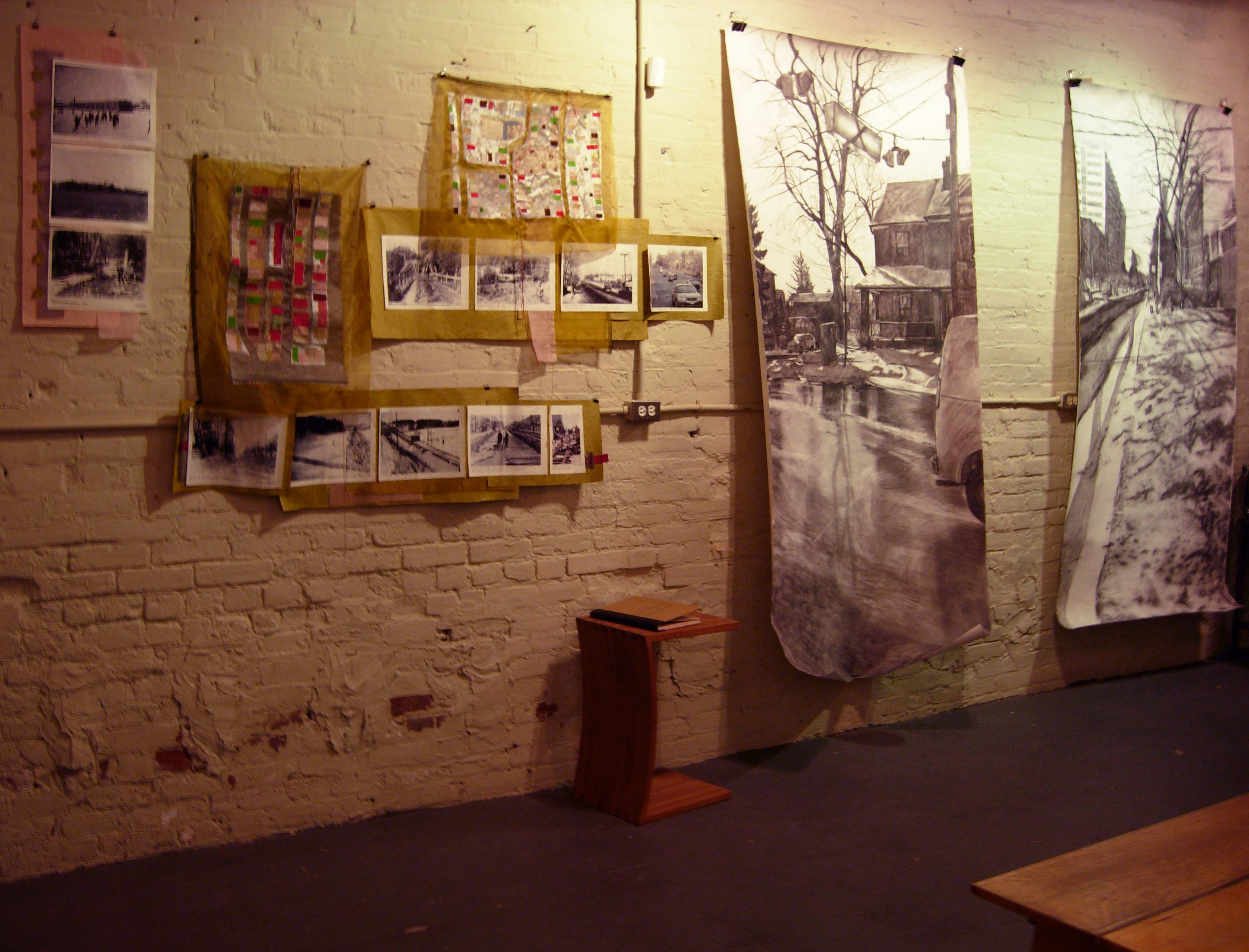Exploring theories and practices of creating a feeling of being ‘at home’ in the world, Finding Home (2006) is a multi-modal artwork accompanied by an illustrated text, all based on a walk with my dog, Auggie, through our Toronto neighbourhood.
Finding Home integrates media as diverse as large-scale charcoal drawings, textile maps and sculptural objects, archival and contemporary photographs together in an untraditional collage. Collage being a medium of juxtapositions, the visual installation and associated text invite the viewer/reader to consider the formal and conceptual individualities of the various components as a single conversation — about place, belonging and home.
More academically known as Finding Home: Knowledge, Collage and the Local Environments (2007), this project is my practice-based PhD research and was the first doctoral work of artistic research at York University (Toronto, Canada). As a doctoral dissertation, Finding Home won multiple national and international awards for excellence and innovation. Excerpts of a video tour I made of the dissertation exhibition at Toronto’s Gladstone Hotel can be seen here and here.

Textile maps of multiple neighbourhood walks, featuring silk pieces and hand stitching on pea green organza, coordinate with similarly toned lengths of handmade mulberry paper onto which is stitched and glued archival and contemporary photos, printed on textured Japanese paper. Finding Home aims to engage both the visual and the haptic senses.
Each of the five large drawings of Finding Home portrays recognizable neighbourhood features in a highly naturalistic style that is easily accessible to all kinds of viewers. Each image serves as a door-sized glimpse of a characteristically ‘Toronto’ streetscape, in this case, the popular ‘Queen West West’ neighbourhood near my then-studio. Each drawing is based on a composite of multiple source photographs, worked in vine charcoal and charcoal pencil on warm pressed watercolour paper.

This drawing includes a woman walking with two dogs, engaging in the kind of peregrinatory knowledge practice that has become central to my own way of em-placing myself, linking my body to a locale, feeling the landscape’s contours through my own moving muscles and bones, the rhythms of my breath. Walking with a companion of another species, one has an ongoing opportunity to consider a very differently embodied way of being in the world. This body of work also initiated my ongoing interest in critical animal studies, exploring the ethics of animal-human relations in what’s being called the “post-human” era.
Finding Home was also my first step in mapping, offering four maps of walks through parts of my home neighbourhood. Exploring maps as interpretations – that is as representations of a very particular kind of knowledge at a specific moment of time – these works started with and adapted surveyors’ maps of the city, which including shapes of buildings, locations of lampposts, angles of alleyways, that is, all the structural details of the city at the time of the map’s making. (In their specificity, these could be seen as an analogue precursor to Google maps.) Given that I walked these sites regularly with Auggie, I benefited from his perspective on the territory and his knowledge of community. Accordingly, the maps mark in red any building in which a dog lived. The colours and textures of these maps aim to entice just as the actual neighbourhood enticed Auggie and me as we walked, our routes represented by the trajectories of embroidery floss. Stitch by stitch, step by step, our walks are accomplished.

Finding Home has been shown in whole and in part in galleries and community venues in Toronto and Montreal (Canada).


